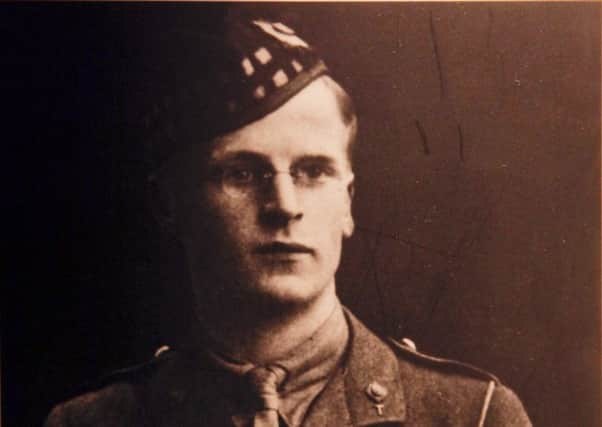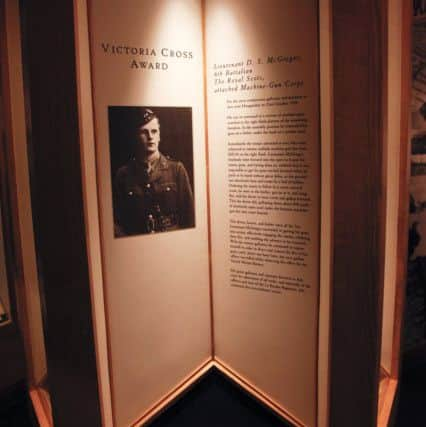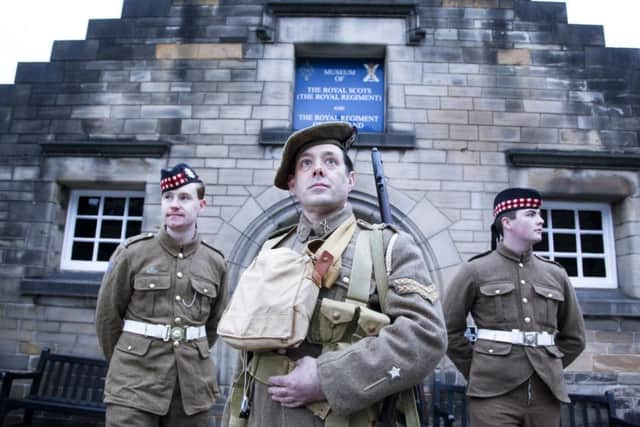Edinburgh lieutenant awarded Victoria Cross for WWI heroics to be honoured


His bravery and devotion to duty on 22 October 1918 in what historians call the final advance earned him the Victoria Cross - him being one of only 627 men to receive this honour in the First World War.
He was among the 11,313 Royal Scots killed during World War One and a commemoration is to take place on Monday at George Heriot’s School, where he attended between 1908-1911, to honour the Edinburgh-born lieutenant.
Advertisement
Hide AdAdvertisement
Hide AdAn extract from The London Gazette dated 13th December 1918, recorded an insight into his courageous actions in the line of duty: “For most conspicuous bravery and devotion to duty near Hoogmolen on 22nd of October 1918.


“When in command of a section of machine guns attached to the right flank platoon of the assaulting battalion. Immediately the troops advanced they were subjected to intense enfilade machine-gun fire from Hill 66 on the right flank.
“Lt. McGregor fearlessly went forward and located the enemy guns, and realised that it was impossible to get his guns carried forward either by pack or by hand without great delay, as the ground was absolutely bare and fire swept.
“Ordering his men to follow by a more covered route, he mounted the limber and galloped forward under intense fire for about 600 yards to cover. The driver, horses and limber were all hit, but Lt. McGregor succeeded in getting the guns into action, effectively engaging the enemy, subduing their fire, and enabling the advance to be resumed.
Advertisement
Hide AdAdvertisement
Hide Ad“With the utmost gallantry he continued to expose himself in order to direct and control the fire of his guns, until, about an hour later, he was killed. His great gallantry and supreme devotion to duty were the admiration of all ranks.”


Lt. McGregor was born in Marchmont Road on October 16 1895, the second son of David McGregor, a tailor and clothier, and his wife Annie. He had an older sister and brother, James and Marjorie, and a younger brother, Ronald. He was educated at both George Watson’s College and George Heriot’s and was an officer cadet.
In December 1911, when David was 16 years old, he went to work for the Commercial Bank of Scotland as an apprentice at its Edinburgh North Bridge branch. The following April he transferred to the Edinburgh Stockbridge branch.
At first, his work would have involved running errands and undertaking basic administrative tasks. As his apprenticeship continued, he would have been taught how to undertake all aspects of banking clerical work, and how to serve customers at the counter.
Advertisement
Hide AdAdvertisement
Hide AdHe was paid just £20 a year throughout his three-year apprenticeship – less than a third of an unskilled builder’s wage at that time.
In 1914 David joined the army, aged 23, initially as a gunner in the Royal Field Artillery.
A year later he was commissioned into the Royal Scots. He was sent to Egypt in May 1916, and later served on the Western Front in the 6th Battalion Royal Scots, attached to the 29th Battalion Machine Gun Corps.
Lord Provost Frank Ross will attend Monday’s event to unveil a commemorative stone for Lt. McGregor. A church service will take place from 2.30pm before the unveiling at 3.20pm which will include a laying of a regimental wreath by Lt Col Jim Bain MBE, commanding officer of the school CCF.
Advertisement
Hide AdAdvertisement
Hide AdTrevor Royle, a member of the Scottish Government’s Advisory Panel for Centenary Commemoration of World War One said: “The First World War changed for ever the way we viewed armed conflict and those who did the fighting.
“The survivors were promised “a world fit for heroes”; those less fortunate were “the glorious dead”; those whose bodies were never traced were soldiers “known unto God”.
“One hundred years later it is fitting that the people of Scotland should pause and remember them and the events which shaped their lives in a mood of contemplation, profound gratitude and commemoration.
“Once again in the regiment’s long history The Royal Scots are taking the lead by making sure that the legacy of their fallen comrades is never forgotten.”
Advertisement
Hide AdAdvertisement
Hide AdLt. McGregor was buried in Staseghem Communal Cemetery, Belgium with full military honours.
He was posthumously awarded the VC on 13th December 1918. After the Great War, his sister Marjorie and brother Ronald both emigrated to New Zealand.
The family donated David’s medals including the VC, British War Medal 1914-20 and Victory Medal 1914-19 to the Royal Scots Museum at Edinburgh Castle.
During the 1914-1918 war the Royal Scots raised 35 battalions (each of around 1,000 men), and received 71 Battle Honours and six Victoria Crosses.
Advertisement
Hide AdAdvertisement
Hide AdMore than 100,000 Royal Scots fought in the Great War with 46,000 of those wounded as well as the 11,313 who died.
Colonel Martin Gibson said: “We are immensely proud of the Regiment’s record in the First World War, and hope that our unique list of those Royal Scots who died will help their descendants and others who want to find out about them and enable all visitors to remember their sacrifice, as well as enabling an enduring legacy as we approach the centenary of Armistice Day 1918.
“We are pleased that we have reached out across the world and already had contacts from across UK and as far afield as Canada, the United States, South America, India and Australia.”